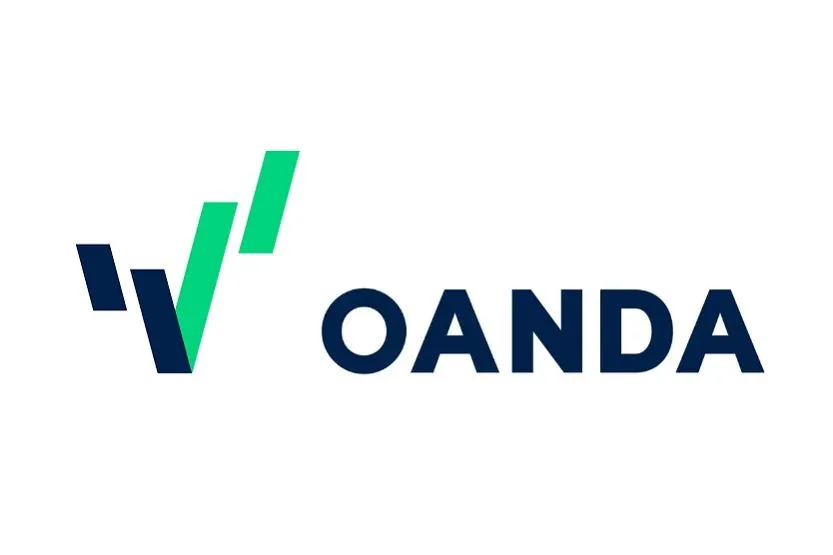The token representing the layer-1 blockchain Shido plummeted by as much as 94% in a mere 30 minutes subsequent to falling victim to an exploit on its Ethereum-based staking contract.
Blockchain security firm PeckShield alerted its audience to the plunge in a post dated Feb. 29 X.
In a subsequent post, it elucidated that an exploiter had succeeded in transferring the blockchain’s Ethereum staking contract to another address, following which the new owner upgraded the contract with a concealed function to withdraw staked tokens.
According to CoinGecko data, PeckShield disclosed that the attacker had withdrawn over 4.3 billion Shido tokens, equating to nearly half of the circulating token supply, which was approximately 9 billion tokens.
Before the price downturn, the value of these tokens stood at approximately $35 million.
In another post, the pseudonymous on-chain researcher ZachXBT revealed that they had identified the exploiter’s address, which had been funded through cryptocurrency initially bridged from the cross-chain protocol Layerswap and subsequently from the Arbitrum blockchain.
ZachXBT claimed to have uncovered the true identity of the wallet owner who funded the exploiter but suggested that they too had fallen victim to hacking, as “their assets were suddenly transferred before funding the exploiter.”
Several hours after the incident commenced, the Shido team issued an official statement asserting that they had neutralised any further threats against Shido.
READ MORE: ENS Resolves Dispute Over eth.link Domain with $300,000 Settlement
The protocol also stated that they had initiated an investigation and urged the hacker to engage in negotiation regarding a bounty.
Shido also assured users who staked their tokens that their assets would be returned.
Shido, a layer-1 proof-of-stake blockchain that is yet to launch its mainnet, announced its impending mainnet launch in a post dated Feb. 24 X.
SHIDO, an Ethereum-based ERC-20 token, allowed staking on the project’s connected decentralized exchange (DEX) to earn an 8% annual yield, according to its website.
Shido did not provide an immediate response to a request for comment regarding the contract exploit.
According to PeckShield, last year witnessed over 600 crypto-related hacks resulting in $2.1 billion in losses, marking a nearly 30% decrease from 2022.
Up until January of this year, there had been 30 attacks resulting in $182.5 million lost.
February also seemed to conclude as a significant month for exploiters, with $290 million stolen from PlayDapp, alongside several million dollars’ worth of crypto stolen in various wallet breaches and phishing scams.
The Bitcoin bull market commenced on March 1, according to the pseudonymous quantitative analyst PlanB, renowned for devising the controversial stock-to-flow (S2F) model for Bitcoin’s price.
As per a recent post by PlanB referencing the S2F chart, the Bitcoin accumulation phase has concluded, marking the cessation of straightforward Bitcoin buying opportunities.
“Bull market has started.
If history is any guide, we will see ~10 months of face-melting [fear of missing out] FOMO: extreme price pumps combined with multiple -30% drops.”
This assertion from the pseudonymous analyst followed Bitcoin’s surge past $60,000, the first time in over two years.
Bitcoin’s value experienced a minor decline of 0.75% in the 24-hour period ending at 3:00 pm Central European Time, settling at $62,472.
While the S2F model garnered attention during the 2021 bull run, it’s not an infallible predictor of Bitcoin’s price.
Notably, according to the chart, Bitcoin was projected to surpass $100,000 in early August 2021, when its actual value was around $44,000.
Ethereum co-founder Vitalik Buterin has also criticized the S2F model for fostering a “false sense of certainty.”
READ MORE: OpenAI Accuses The New York Times of Hacking AI Systems in Copyright Lawsuit
PlanB’s predictions align with those of other analysts.
c, a senior analyst at K33 Research, highlighted that Bitcoin typically consolidates post-halving but experiences rallies in subsequent months.
“Each halving has proven to be a solid point to enter the market. 150–400 days after the halving tends to be the sweet spot where the compounding effects of subdued miner selling pressure impact BTC positively directionally,” Lunde explained to Cointelegraph.
Moreover, the recent approval of spot Bitcoin exchange-traded funds (ETFs) has intensified investor interest in Bitcoin, contributing to its price appreciation.
Despite a 3% correction following Grayscale’s Grayscale Bitcoin Trust ETF’s sale of $598.9 million worth of BTC on Feb. 29, Bitcoin’s price surged over 22% in the past week, according to CoinMarketCap.
Excluding Grayscale’s ETF, the nine new spot Bitcoin ETFs witnessed over $2 billion in combined daily volume for the second consecutive day on Feb. 28.
These ETFs accounted for 75% of new Bitcoin investments since their launch on Jan. 11, according to a report by CryptoQuant.
Bitfinex Analysts predict that the ETFs will propel Bitcoin to new all-time highs before 2024-end, with a conservative price objective of $100,000-$120,000 by Q4 2024 and a cycle peak expected in 2025 concerning total crypto market capitalization.
OpenAI has petitioned a federal judge to dismiss certain portions of The New York Times’ copyright lawsuit, contending that the newspaper “paid someone to hack ChatGPT” and other artificial intelligence (AI) systems to fabricate misleading evidence.
In a filing at a Manhattan federal court on Monday, OpenAI asserted that The NYT induced the technology to replicate its content through “deceptive prompts that violate OpenAI’s terms of use.”
OpenAI refrained from naming the individual it alleges The NYT enlisted to manipulate its systems, thus avoiding accusations of the newspaper violating anti-hacking laws.
In the filing, OpenAI stated:
“The allegations in the Times’s complaint do not meet its famously rigorous journalistic standards.
The truth, which will come out in this case, is that the Times paid someone to hack OpenAI’s products.”
OpenAI’s assertion of “hacking” is, according to the newspaper’s attorney Ian Crosby, merely an attempt to exploit OpenAI’s products to uncover evidence of the purported theft and replication of The NYT’s copyrighted work.
In December 2023, The NYT initiated legal action against OpenAI and its primary financial backer, Microsoft.
The lawsuit alleges the unauthorised utilisation of millions of NYT articles to train chatbots disseminating information to users.
Drawing from both the United States Constitution and the Copyright Act, the lawsuit defends The NYT’s original journalism. It also implicates Microsoft’s Bing AI, alleging the creation of verbatim excerpts from its content.
READ MORE: Grayscale’s Bitcoin ETF Records Record Low Outflows Amidst Rising Market Momentum
The New York Times is one of many copyright holders litigating against tech companies for purportedly misappropriating their content in AI training. Other factions, including authors, visual artists, and music publishers, have similarly lodged lawsuits.
OpenAI has previously argued that training advanced AI models without incorporating copyrighted works is “impossible.”
In a submission to the United Kingdom House of Lords, OpenAI contended that, as copyright encompasses a broad array of human expressions, training leading AI models sans copyrighted materials would be unviable.
Tech companies contend that their AI systems ethically use copyrighted material, emphasising that such lawsuits imperil the growth of a potentially multitrillion-dollar industry.
Courts have yet to ascertain whether AI training qualifies as fair use under copyright law.
Nevertheless, some infringement claims concerning outputs from generative AI systems were dismissed due to insufficient evidence demonstrating that the AI-generated content bore resemblance to copyrighted works.
US-based cryptocurrency brokerage firm OANDA is poised to commence cryptocurrency trading services in the United Kingdom through its registered subsidiary, OANDA Crypto.
The crypto subsidiary was established last year following the firm’s acquisition of a majority stake in Financial Conduct Authority (FCA)-registered Coinpass.
The new crypto trading platform will provide trading services for over 63 cryptocurrency pairs, including Bitcoin and Ether, with intentions to incorporate additional tokens and features in the forthcoming years.
OANDA’s recent expansion in the UK follows more than a year after the company initiated crypto trading services in the US in collaboration with Paxos, a renowned crypto trading platform.
The company recently relocated its European operations from Malta to Warsaw in Poland, acquiring the Polish broker Dom Maklerski TMS Brokers SA, subsequently rebranding it to OANDA TMS.
The crypto brokerage firm has consistently targeted regions with stringent regulatory frameworks, initially focusing on the US and now extending to the United Kingdom.
Several prominent crypto companies withdrew their services from the UK since October 2023 due to the FCA’s new regulatory guidelines concerning crypto advertising.
Crypto firms like Bybit and Revolut temporarily suspended their UK operations last year, citing the new FCA promotion regulations.
READ MORE: Reddit and Google Forge AI Partnership to Boost Model Training
The new advertising regulations permit only FCA-registered virtual asset service providers to promote their activities in the country.
Additionally, these regulations mandate crypto firms to significantly modify their online platforms to better caution potential customers about investment risks.
The FCA identified “significant levels of non-compliance” among crypto firms breaching the crypto promotion rules that came into effect on October 8, 2023.
The regulator noted that between October 8 and December 31, 2023, it issued 450 consumer alerts against virtual asset companies unlawfully promoting crypto.
Conversely, OANDA’s head of digital assets, Lucian Lauerman, described the UK market as highly educated and dynamic.
He remarked that the market is aligning more with the traditional markets where the company has operated, indicating a slightly elevated regulatory standard.
Cointelegraph reached out to OANDA for comments but has not yet received a response.
The Ministry of Culture in Saudi Arabia has inaugurated a metaverse dedicated to exhibiting and safeguarding the cultural heritage of the nation, marking its founding day.
The Saudi government’s Cultural Universe metaverse initiative, which traces the extensive history of Saudi Arabia back to 1727, was launched on February 22.
Utilising Oracle’s Hyperledger Fabric 2.5 blockchain technology, the metaverse was crafted by droppGroup’s Generative Media Intelligence artificial intelligence (AI) system, known as droppPhygital.
The virtual realm adopts a first-person shooter approach to aid users in navigating the metaverse.
Users can freely traverse a shared path alongside others, exploring information displayed on either side of the route.
Proximity to virtual depictions of historical events triggers voice audio that elaborates on the event in depth.
However, this audio feature is currently limited to Arabic and does not offer English translations.
The Cultural Universe encompasses various sectors dedicated to music, art, history, cuisine, crafts, and other facets of Saudi heritage, along with mini video games.
This service is freely accessible via websites, mobile devices, virtual reality headsets, and other compatible digital platforms. The official announcement from the Saudi government stated:
READ MORE: Bitcoin Halving Threatens US Miner Profitability and Sparks Global Migration Talks
“This cross-platform compatibility embodies the Ministry of Culture’s commitment to inclusivity, enabling a diverse global audience to explore and engage with the rich history of Saudi culture.”
The Saudi Ministry of Culture, entrusted with conserving and promoting the nation’s cultural legacy while fostering contemporary artistic expression, perceives the metaverse as a “transformative moment” and regards the initiative as a cultural revolution.
According to Samuel Huber, CEO of LandVault, a metaverse company collaborating with various government entities in the Middle East, Saudi Arabia, alongside other Middle Eastern nations, has transcended the metaverse’s “era of hype” and is progressing towards leveraging the technology to bolster their economies.
In an interview with Cointelegraph, Huber elucidated that the metaverse entails constructing 3D experiences embedded within websites. He remarked:
“What we found is the biggest segment are the governments in the Middle East, especially the UAE [United Arab Emirates], Saudi and Qatar, which are trying to digitalise their infrastructure and create really interesting economies for their citizens.”
He further stated that, akin to blockchain and AI, the metaverse stands as “one of those pillars” that the Middle East is eyeing for economic advancement.
The Ethereum Name Service (ENS) developer is poised to resolve its dispute with Manifold Finance over ownership of the eth.link domain following the approval of a $300,000 settlement by its decentralised autonomous organisation (DAO).
A vote by the ENS DAO concluded on Feb. 26, with approximately 88% endorsing the settlement.
This agreement will see ENS Labs dropping its lawsuit and paying $300,000 to Manifold while retaining the domain name.
Additionally, 84% of voters approved a $750,000 reimbursement for ENS Labs’ legal expenses.
This settlement brings an end to an 18-month-long conflict that saw ENS Labs suing Manifold and domain registrars GoDaddy and Dynadot in an Arizona District Court.
The lawsuit resulted in an order preventing the domain from being transferred away from ENS Labs.
ENS founder Nick Johnson explained in a Feb. 13 forum post that Manifold’s settlement terms included a demand for $300,000 from ENS Labs, alongside confidentiality and non-disparagement clauses.
Johnson stated, “In return, they are offering an all-parties settlement, which would result in the dismissal of the case and ENS Labs retaining the eth.link domain name.”
ENS functions as a blockchain equivalent of the Domain Name System (DNS), translating domain names like cointelegraph.com into IP addresses for browser accessibility.
Due to the incompatibility between the two systems, ENS utilises the eth.link domain to support “.eth” ENS-based domains.
READ MORE: Carlson Group Adds Top Bitcoin ETFs to RIA Offerings, Prioritising Low Fees and Growth
The ownership of eth.link lapsed in July 2022, as the early contributor Virgil Griffith, who owned it, could not renew it while serving a jail sentence.
Subsequently, GoDaddy, the registrar for eth.link, allowed the domain to expire, enabling Manifold to acquire it through auction on Dynadot in September 2022.
ENS initiated legal action against the three entities, obtaining a court order halting the domain’s transfer after they failed to appear at a court hearing.
Following months of legal proceedings, Arizona District Judge John Tuchi ordered Dynadot to unlock eth.link in July 2023 for transfer to ENS.
It appears that ENS and GoDaddy have reconciled over the matter, as they recently collaborated to offer .eth ENS domain holders the opportunity to link their domains with traditional domains for free earlier this month.
The perpetrator of the assault on the decentralised exchange (DEX) KyberSwap has been observed shifting millions in digital assets from one blockchain to another.
On the 26th of February, the blockchain analytics firm PeckShield disclosed movements from the wallet address of the KyberSwap attacker.
According to blockchain data, the hacker transferred 798.8 Ether (ETH), valued at nearly £2.5 million, from Arbitrum to the Ethereum network.
In addition to the £2.5 million, the hacker also relocated almost one million dollars in stablecoins. A wallet associated with the exploiter sent £826,500 of the Dai (DAI) stablecoin to another wallet.
The KyberSwap breach stood out as one of the major breaches of 2023. On the 23rd of November, the DEX notified its community that it had encountered a “security incident” and advised its users to withdraw their funds.
It was initially revealed that around £46 million in digital assets were siphoned off during the breach. However, it later emerged that the total amount lost nearly reached £49 million.
On that day, the hacker also left a message on-chain for the KyberSwap team, stating that negotiations would commence when he was “fully rested.”
In response, the KyberSwap team proposed a bounty of £4.6 million in return for the return of 90% of the pilfered funds.
READ MORE: US Attorney Requests Tighter Travel Restrictions for Former Binance CEO CZ
However, the bounty negotiations took a sour turn when the hacker began to express discontent with KyberSwap’s approach.
On the 29th of November, the hacker posted a message on-chain threatening to prolong negotiations further if the KyberSwap team persisted with their threats of legal action and what the hacker described as unfriendliness.
Subsequently, the hacker made an unexpected demand, seeking total control over the KyberSwap company and all of its assets.
The hacker also insisted on temporary full authority and ownership over KyberDAO, which serves as the governance mechanism for Kyber, along with all documents related to Kyber.
The company was given until the 10th of December, 2023, to decide before the “treaty falls through.”
In response to the hacker’s demands, the KyberSwap team opted to initiate treasury grants for the victims of the breach.
On the 2nd of December, 2023, the team announced it would provide a grant to those who lost funds in the breach and have not been compensated.
The breach also had a profound impact on the company, leading to a 50% reduction in its workforce a month after the incident.
Overdare, a venture centred on the Metaverse, has unveiled a collaboration with Circle, the issuer of USD Coin, aimed at incorporating in-game Web3 wallets and USDC payments for its gaming content creators.
Circle declared on February 26th a strategic alliance with Overdare, designed to facilitate crypto payments for creators of gaming content.
As per the proclamation, Overdare will integrate the stablecoin issuer’s Programmable Wallets service to enable in-game wallets and USD Coin payments for gaming content remunerations.
This facilitates content creators in receiving stablecoins in return for their gaming creations.
Overdare stands as a nonfungible token (NFT)-centric metaverse game, a joint effort between the software entity Naver Z and video game publisher Krafton, renowned for its involvement in launching the widely popular battle royale game PUBG: Battlegrounds.
The venture was unveiled on September 15, 2023, as a Roblox-esque mobile game constructed utilising the Unreal Engine 5.
In addition to the wallet integration, Circle emphasised that the metaverse game will incorporate the USDC stablecoin as an alternative method for creators to settle transactions and accrue revenue.
The metaverse enterprise views this as an opportunity to aid gaming creators in transitioning from Web2 platforms to the Web3 realm.
READ MORE: Reddit and Google Forge AI Partnership to Boost Model Training
Henry Park, CEO of Overdare, conveyed the team’s enthusiasm for the collaboration with Circle.
The executive lauded the stablecoin issuer’s adherence to regulatory standards and remarked that the partnership would “assure creators dependable access to their earnings.”
Jeremy Allaire, co-founder and CEO of Circle, expressed his conviction that the partnership could contribute to shaping the “future of digital entertainment” and foster a Web3 ecosystem for all.
Allaire also underscored their eagerness to furnish Web3 wallets and USDC payout support to Overdare in supporting the creator economy.
The latest development within Overdare arises amidst a surge in interest in blockchain gaming tokens.
On February 22nd, the crypto token of Web3 game Pixel approached a valuation of $2.7 billion subsequent to its listing on the crypto exchange Binance.
By then, the PIXEL token had surged to a peak of $0.53, marking a more than tenfold increase from its listing price of $0.04.
Grayscale’s spot Bitcoin exchange-traded fund (ETF) has encountered its third consecutive trading day of dwindling net outflows, plummeting to a record low of £22.4 million as ETFs collectively achieved a two-week net inflow peak.
Farside Investor data for 26th February reveals that the Grayscale Bitcoin Trust (GBTC) experienced three successive days of diminishing net outflows on 22nd, 23rd, and 26th February.
The trading week culminated on Friday with a daily net outflow of £44.2 million, which further halved on 26th February.
Daily net GBTC outflows reached their zenith on 22nd January, amounting to £640.5 million.
Nevertheless, Grayscale has endured 31 consecutive trading days of outflows since its transition to an ETF on 11th January, with a total of £7.47 billion drained from the ETF.
CEO of Bitcoin technology firm Blockstream, Adam Back, shared on X on 26th February that he is “waiting for the day GBTC flashes an inflow.”
Back suggested that while it “could happen,” it would necessitate “just enough premium” to motivate traders to arbitrage the ETF.
Henrik Andersson, Chief Investment Officer at asset manager Apollo Crypto, concurred in a separate X post, asserting that when Grayscale’s fund records a net inflow for the first time, it “will be a mega signal to the market.”
READ MORE: US Attorney Requests Tighter Travel Restrictions for Former Binance CEO CZ
Meanwhile, Farside’s data for 26th February indicates that the combined net inflows of all Bitcoin ETFs excluding Invesco and Galaxy’s reached £515.5 million — the highest in two weeks.
The ETFs attained a combined net inflow of £631.3 million on 13th February but have struggled to sustain the momentum since, witnessing even a net outflow of £35.6 million on 21st February due to a comparatively larger outflow day from GBTC and smaller inflows to other funds.
Fidelity’s ETF garnered the majority of the inflows on 26th February, exceeding £243 million, constituting nearly half of the day’s net total.
It marks FBTC’s second-highest inflow day ever, following behind 17th January.
The remaining half of the net inflow stemmed from BlackRock’s ETF, along with ARK Invest and 21Shares fund, which received respective inflows of nearly £112 million and over £130.5 million.
Trading volumes for the “new nine” spot Bitcoin exchange-traded funds (ETFs) have hit a fresh daily record as BTC surged to as high as $54,938 on Monday.
On February 26, trading volumes for the nine surpassed $2.4 billion, surpassing the previous record of $2.2 billion set on the inaugural trading day, January 11, according to data disclosed by Bloomberg ETF analyst Eric Balchunas.
The figures for both days excluded volume from Grayscale’s converted Bitcoin ETF product, the Grayscale Bitcoin Trust (GBTC).
BlackRock’s IBIT led the pack on February 26 with £1.29 billion, establishing its own daily record by approximately 30%, while Fidelity’s FBTC trailed at £576 million.
Flows from the ARK 21Shares (ARKB) and Bitwise (BITB) ETFs totalled £276 million and £81 million, respectively.
Balchunas remarked he wasn’t “totally sure” where the new interest stemmed from but highlighted that volumes typically surge on the first day of the trading week.
Fellow Bloomberg ETF analyst James Seyffart observed February 26 marked the second-largest trading day recorded at £3.2 billion when incorporating flows from Grayscale’s Bitcoin ETF.
Earlier in the trading session, when IBIT surpassed the £1-billion milestone, Balchunas pointed out that IBIT had secured the 11th largest volume among all ETFs.
“Insane number for newbie ETF (especially one with ten competitors). £1b/day is big boy level volume, enough for (even big) institutional consideration.”
READ MORE: China’s Supreme Prosecutorial Authority Targets Cybercrime Surge Using Blockchain Projects
Meanwhile, Bitcoin’s price surged to £54,938 on February 26 — reaching a two-year high — although it still falls short of Bitcoin’s all-time peak of £69,044 on November 10, 2021, as per CoinGecko data.
Related: BlackRock’s Bitcoin ETF reaches top 0.2% of all ETFs so far this year
While flow data for February 26 is pending, over £583 million streamed into spot Bitcoin ETFs in the four-day trading week prior, as per BitMEX Research.
A net outflow of £35.7 million was recorded on February 21, marking the first day without inflows since January 25.
Year-to-date inflows have now surpassed £5.5 billion.
IBIT, FBTC, ARKB, and BITB have accumulated the most substantial inflows of £5.9 billion, £4 billion, £1.4 billion, and £1 billion, respectively, while GBTC has witnessed outflows of £7.4 billion.










